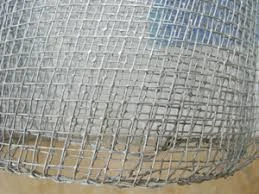-
+86 15030157877
-
sales@galvanizedmetalmesh.com
Nov . 10, 2024 15:28 Back to list
Wholesale Barbed Wire Installation Guide for Secure Fencing Solutions
Wholesale Barbed Wire Installation A Comprehensive Guide
Barbed wire has long been a staple in agricultural and security fencing, providing a simple yet effective way to safeguard properties and enclose livestock. In the wholesale market, barbed wire installation not only ensures the security of properties but also contributes to the efficiency of agricultural practices. This article aims to provide an in-depth guide to barbed wire installation, focusing on the advantages of buying wholesale and the steps involved in proper installation.
Advantages of Wholesale Barbed Wire
Purchasing barbed wire in wholesale quantities offers numerous benefits. Firstly, cost savings are a significant advantage. Wholesale prices are generally lower than retail, allowing buyers to save a considerable amount on bulk purchases. This is particularly useful for large-scale operations such as farms, ranches, and construction sites where extensive fencing is needed.
Moreover, buying in bulk ensures consistency in the quality and specifications of the wire. This uniformity is crucial in maintaining the integrity and effectiveness of the fencing system. When all wire is sourced from a single manufacturer, it reduces the risk of variations that could arise from purchasing from different suppliers.
Additionally, wholesale purchases often come with favorable terms regarding delivery and packaging. Suppliers may offer customized solutions that cater specifically to the buyer’s needs, including different types of barbed wire suited for various applications—whether for securing livestock or deterring intruders.
Preparation Before Installation
Before diving into the installation process, several preparatory steps must be taken. Firstly, evaluate the area where the barbed wire will be installed. This includes measuring the perimeter you wish to encircle, which will determine how much wire you will need. It’s advisable to map out the installation area, taking note of any obstacles such as trees, rocks, or existing fences.
Next, check local regulations regarding fencing. Some areas have specific height requirements or restrictions on the types of fencing allowed. Ensuring compliance with these regulations will save you from potential fines or problems in the future.
Essential Tools and Materials
Proper installation of barbed wire requires the right tools and materials. Essential tools include fencing pliers, wire cutters, a post hole digger or auger, a level, and a fencing stretcher. Additionally, you will need fence posts (wooden, metal, or vinyl), staples or wire ties, and, of course, the barbed wire itself.
wholesale barbed wire installation

When purchasing barbed wire, consider the gauge and type. Heavier gauges (lower numbers) are generally stronger and more durable, while lighter gauges are more flexible and easier to work with but may not offer the same level of security.
Step-by-Step Installation Process
1. Setting the Fence Posts Start by marking the position of your fence posts, which should be placed about 8 to 12 feet apart. Use the post hole digger to create holes for each post, ensuring they are deep enough for stability—typically about one-third of the post’s length.
2. Placing the Posts Insert the posts into the holes and check for vertical alignment with a level. Backfill the holes with soil or gravel to secure the posts in place.
3. Attaching the Bottom Wire Begin installing the barbed wire at one end by attaching it to the bottom of the first post using staples or wire ties. Make sure to leave some slack to allow for stretching.
4. Stretching the Wire Use the fencing stretcher to pull the wire taut between the posts. This is crucial to prevent sagging and to maintain the integrity of the fence.
5. Securing the Wire Once stretched, fasten the wire to each post with staples or ties, ensuring it is securely attached. Repeat this process for additional strands of wire, typically installing two to four strands for effective fencing.
6. Finishing Touches After all wires are installed, check for any loose sections and ensure that each wire is tightly secured to the posts. Trim any excess wire and make sure the fence is clear of debris.
Conclusion
Installing wholesale barbed wire can be a cost-effective solution for securing property and livestock. With careful planning, the right tools, and adherence to safety regulations, you can achieve a durable and effective fencing system. Whether for agricultural use or security measures, a properly installed barbed wire fence can provide peace of mind and protection for years to come.
-
Premium Welded Gabion Mesh | Robust & Eco-Friendly
NewsJul.31,2025
-
Premium Eco-Friendly Roof Tiles | Affordable & Durable
NewsJul.31,2025
-
Premium Roof Tiles for Durable & Stylish Roofing Solutions
NewsJul.30,2025
-
High-Quality Roof Tiles for Durable & Stylish Roofing Solutions
NewsJul.29,2025
-
High Quality Square Wire Mesh Manufacturer & Supplier for Wholesale
NewsJul.29,2025
-
Premium Roof Tiles for Durable & Stylish Roofing Solutions
NewsJul.29,2025



